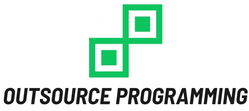Are you looking to bring your innovative ideas to life through rapid prototyping? Outsourcing could be the key to unlocking a world of possibilities! In today’s fast-paced business environment, outsourcing has become a game-changer in the realm of product development. Let’s delve into the dynamic world of outsourcing in modern rapid prototyping and discover how it can elevate your project to new heights.
What is Outsourcing?
Outsourcing is a strategic business practice where companies delegate specific tasks or processes to external vendors. In the context of rapid prototyping, outsourcing involves partnering with specialized service providers to bring prototypes to life efficiently and cost-effectively.
By leveraging the expertise and resources of outsourcing partners, businesses can access a wide range of skills and technologies that may not be available in-house. This allows for faster turnaround times and enhanced flexibility in adapting to project requirements.
Outsourcing in rapid prototyping also enables companies to focus on their core competencies while leaving complex prototyping tasks to experts. Additionally, it offers a scalable solution for managing fluctuating workloads without the need for extensive investments in equipment or training.
Outsourcing plays a crucial role in optimizing resource allocation, reducing time-to-market, and driving innovation in the rapidly evolving landscape of product development.
The Role of Outsourcing in Rapid Prototyping
Outsourcing plays a crucial role in the realm of rapid prototyping, offering companies the flexibility and expertise needed to bring their ideas to life quickly. By entrusting certain aspects of the prototyping process to external partners, businesses can leverage specialized skills and resources that may not be available in-house.
One key aspect of outsourcing in rapid prototyping is the ability to access cutting-edge technologies and equipment without investing in them directly. This allows companies to stay on the forefront of innovation without bearing the full cost burden themselves.
Outsourcing certain tasks like design iterations or material sourcing can streamline the prototyping timeline, helping organizations meet tight deadlines and launch products faster. Collaboration with external experts also brings fresh perspectives and insights that can lead to more refined final prototypes.
Outsourcing is a strategic tool for companies looking to enhance their rapid prototyping capabilities while optimizing costs and resources effectively.
Commonly Outsourced Services in Rapid Prototyping
When it comes to rapid prototyping, there are several key services that are commonly outsourced to specialized firms. One of the most popular outsourcing services is 3D printing. These companies have state-of-the-art equipment and expertise to bring digital designs to life quickly and accurately.
Another frequently outsourced service is CNC machining. This process involves cutting materials with precision using computer-controlled machinery, ensuring high-quality prototypes that meet exact specifications. Injection molding is also a common outsourcing choice for producing large quantities of plastic parts efficiently.
Many businesses opt to outsource laser cutting services for intricate designs that require precise and clean cuts on various materials. Surface finishing, such as painting or coating, is often delegated to experts who can provide professional-looking prototypes ready for presentation or testing.
By outsourcing these services, companies can benefit from cost savings, access to advanced technology, faster turnaround times, and specialized skills that may not be available in-house. Leveraging external expertise in rapid prototyping can help businesses streamline their product development processes and stay ahead of the competition.
Benefits of Outsourcing in Rapid Prototyping
Outsourcing in rapid prototyping comes with a plethora of benefits that can significantly impact the efficiency and success of your projects. By entrusting specialized tasks to external experts, you gain access to a diverse pool of talent and resources that may not be available in-house. This can lead to faster turnaround times, higher quality outcomes, and ultimately cost savings for your business.
Outsourcing allows you to focus on core competencies while leaving non-core activities to professionals who excel in those areas. It also provides flexibility in scaling operations up or down according to project requirements without the need for additional investments in equipment or training.
Collaborating with external partners can bring fresh perspectives and innovative solutions to the table, stimulating creativity and driving continuous improvement within your organization. Embracing outsourcing as a strategic tool in rapid prototyping can give you a competitive edge by staying agile and adaptive in today’s fast-paced market landscape.
Conclusion
Outsourcing has become a crucial component in the world of rapid prototyping, offering numerous benefits to companies looking to streamline their processes and expand their capabilities. By leveraging external expertise and resources, businesses can accelerate product development, reduce costs, access specialized services, and ultimately stay competitive in today’s fast-paced market.
As technology continues to advance and industries evolve, outsourcing will likely play an even bigger role in the future of rapid prototyping. Embracing this trend can empower companies to innovate faster, bring high-quality products to market more efficiently, and drive overall success in an increasingly dynamic landscape.
Incorporating outsourcing strategies into your rapid prototyping workflow can be a game-changer for your business. So why wait? Start exploring outsourcing options today and unlock new opportunities for growth and innovation!


Leave A Comment Cancel reply